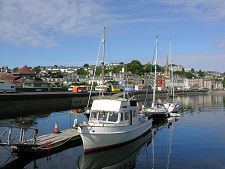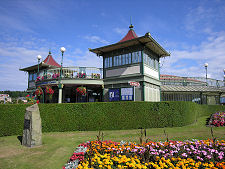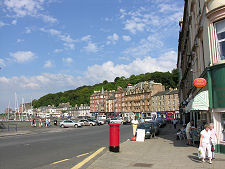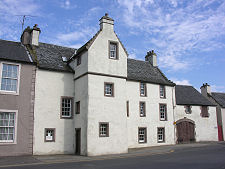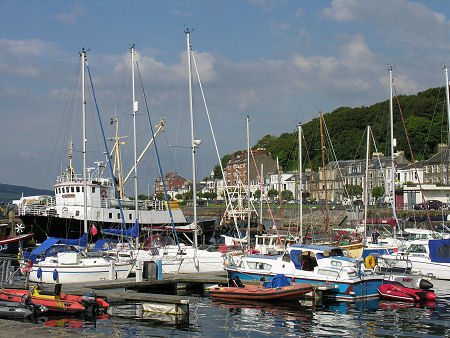 East Side of Rothesay Seen Across the
Harbour East Side of Rothesay Seen Across the
Harbour |
The town of Rothesay gathers around the north facing Rothesay Bay on the east side of the Isle of Bute. As the terminus for the 35 minute ferry crossing from Wemyss Bay, with onward rail connections to Glasgow, it remains a highly accessible resort: and the improvement and increased capacity of the ferry service in recent years reflects steadily improving fortunes after a number of decades of decline.
Today's visitor finds a very traditional and good looking resort that shows all the signs of its Victorian heritage, even down to the Victorian Toilets on the pier: as far as we know the only toilets in Scotland to be accorded their own visitor leaflet. Ladies should note that only the gents' loos are of historical interest: although the Victorian era was named after a female monarch, it seems that provision for the needs of female visitors was not high on the agenda of Rothesay's developers at the time. At least there are now facilities (albeit modern facilities) for female visitors.
As well as serving as a gateway to the Isle of Bute, Rothesay is by far the island's biggest settlement. Here you will find almost all of the island's shops, a large proportion of the accommodation available on Bute, and a number of key visitor attractions. These include the Discovery Centre, in the spectacular Winter Gardens building on the sea front: while in the centre of the town is the circular, moated shell of Rothesay Castle, much of which dates back to the early 1200s. A 15 minute walk from the centre of the town are the remains of St Mary's Church, which is only a century younger, being built in the early 1300s.
Rothesay's origins are closely linked with those of its castle which, despite the attentions of Norse attackers twice in the 1200s, provided a focus for the town. The castle was a favourite home of a number of early Scottish kings, and Rothesay received its Royal Charter from Robert III in 1401, being later declared a free port by James VI in 1585.
In May 1685 Rothesay Castle was attacked during a failed revolt against James VII/II by the Duke of Argyll. At the time Rothesay was said to be the home port for 80 boats fishing for herring, but the final demise of the castle seemed to lead to a period of decline for the town that surrounded it. The 1700s saw a number of small scale ventures into industrialisation, though none of them especially successful. Typical of the time was the distillery that was founded here in 1798, failing not long afterwards.
It was the introduction of some of the world's earliest steamships to the Clyde in the early 1800s that proved to be the making of Rothesay. Those operating these early vessels needed somewhere accessible and attractive to offer as a destination, and Rothesay fitted the bill admirably. The town was quickly established as a very fashionable watering hole and improvements to its harbour came hand in hand with the establishment of regular steamer services linking Rothesay to Glasgow and a number of other Clyde Estuary ports. During the same period it also grew as a herring fishing port.
By the late 1800s, the number of steamers calling at Rothesay had increased to the point where its steamer pier was second busiest on the Clyde, with only Greenock seeing more traffic. Residents of Glasgow could reach Rothesay in around an hour by rail and steamer, and one result was a dramatic increase in the number of hotels and boarding houses. Once the increasingly mass-market trippers had reached Rothesay, they could progress to Port Bannatyne and from there across the island to Ettrick Bay by tram. The peak year for steamer traffic was 1913, and during the Summer of that year anything up to 100 steamers each day called at Rothesay.
The inter-war years saw Rothesay consolidate its position as a resort with, for example, the construction of the Winter Gardens: though in 1936 the trams stopped running. 1954 saw the arrival of the first car ferry serving Bute, the MV Cowal, but in the decades that followed the island saw its attraction as a holiday resort decline as more and more Scots discovered package holidays to Spain and the Mediterranean. The result was a steep decline in the town's fortunes, which have only really started to revive since the late 1990s.
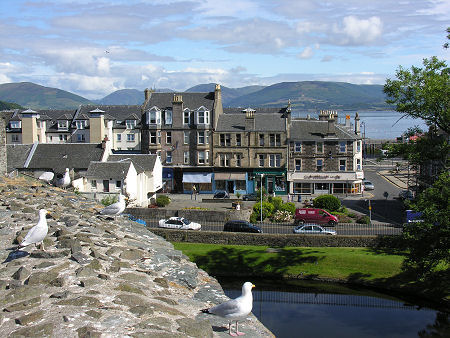 Rothesay Seen from the Walls of Rothesay
Castle Rothesay Seen from the Walls of Rothesay
Castle |

|
|
|
Visitor InformationView Location on MapWhat3Words Location: ///struck.aced.measuring |
 The Ferry from Wemyss Bay
Arrives The Ferry from Wemyss Bay
Arrives |
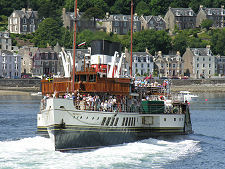 Paddle Steamer Waverley
Departs Paddle Steamer Waverley
Departs |
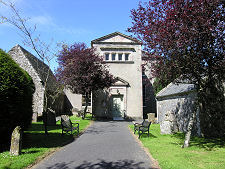 United Church of
Bute United Church of
Bute |
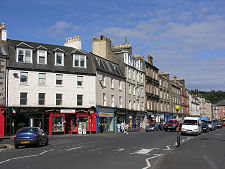 Sea Front, Looking
West Sea Front, Looking
West |
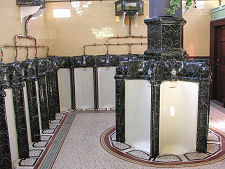 Rothesay's Victorian Toilets |
